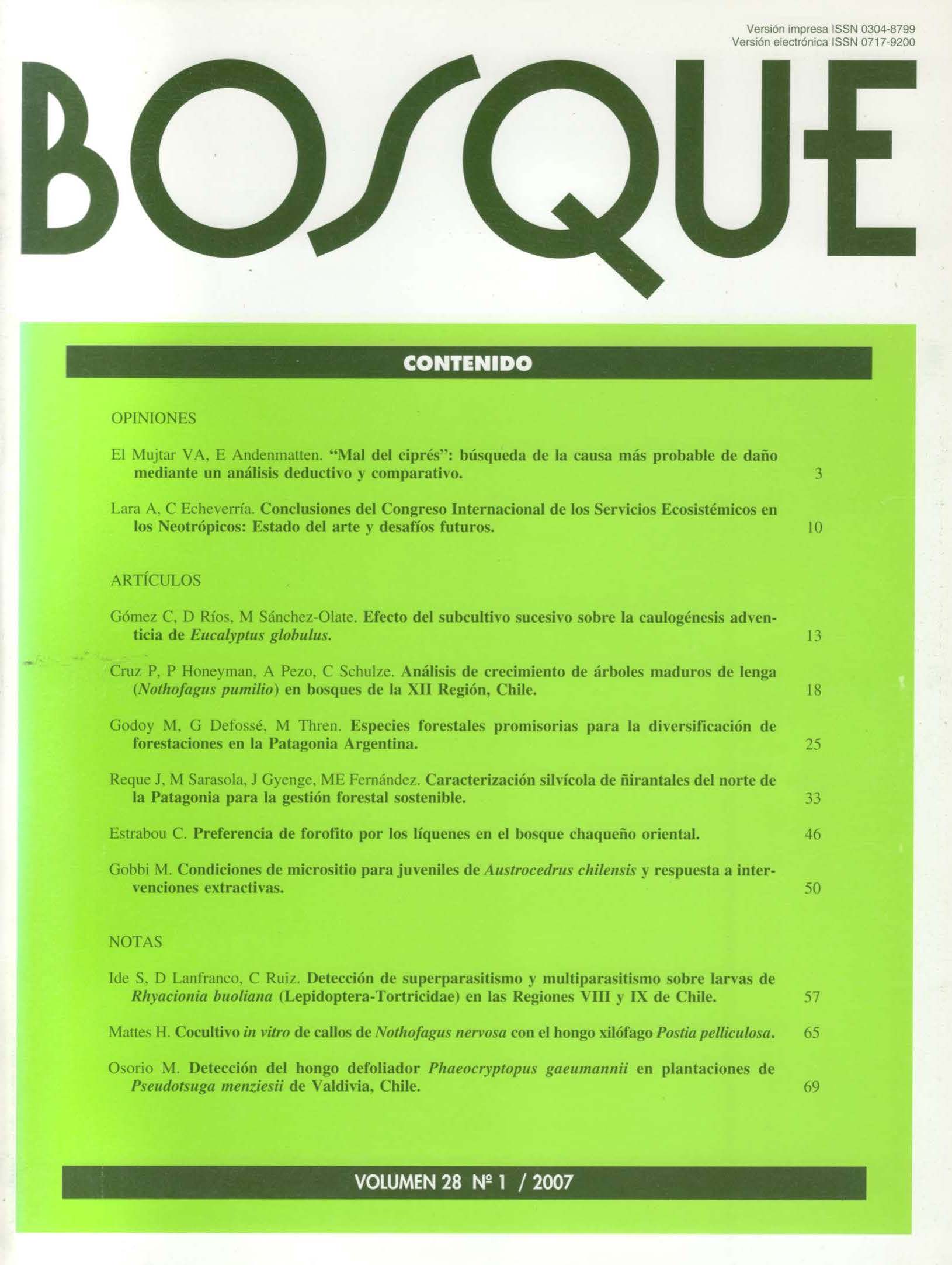Main Article Content
Apr 30, 2007
Abstract
In the western region of Patagonia, Argentina, there are about 70 thousand ha of afforestations, with 80% corresponding to Pinus ponderosa and the rest to Douglas fir (Pseudotsuga menziesii) and lodgepole pine (Pinus contorta). To avoid the tendency to this kind of monocultures, with their unfavorable ecological and sanitary consequences, there is a need of evaluating the possibility of cultivating other timber species, to allow for the diversification of the current afforestations. In this study, small stands and groups of trees planted in the last 50 years were sampled, identifying the species present and measuring height, age and diameter of trees, as well as recording the environmental conditions where they grow. Those healthy species, that were found in two or more sites, and whose growth parameters resulted higher than those found in their places of origin, were selected as promissory species. Measured dominant heights were compared with those appearing in yield tables and site index curves for their natural distribution areas, so as to evaluate their growth potential. The species that showed higher heights than the same species grown in their native areas, were healthier, had high wood quality and a recognised value in the wood market were: Quercus robur, Pinus monticola, Pinus sylvestris and Larix decidua. All demonstrated a high potential to make provenances and plantation trials to diversify afforestations in Patagonia.


